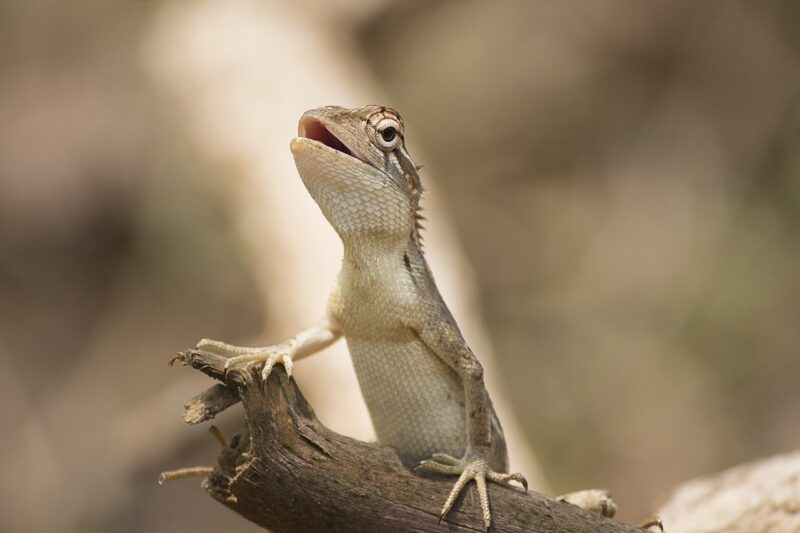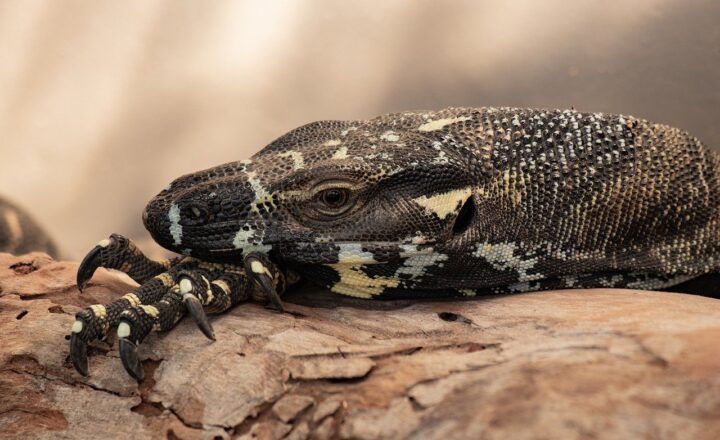How to Build a Comfortable and Stimulating Habitat for Your Pet Lizard
November 15, 2024

Lizards make captivating pets, offering both beauty and intrigue with their diverse behaviors. To thrive, they require an environment that mimics their natural habitats in the wild. This guide will lead you through the essential steps for creating a comfortable and stimulating habitat for your pet lizard, ensuring it remains happy and healthy.
1. Understanding Your Lizard’s Requirements
Different lizard species have varying habitat needs. Before setting up an enclosure, it’s crucial to research your lizard’s specific requirements. Key factors include:
- Species: Are you caring for a bearded dragon, a leopard gecko, or a chameleon? Each species has unique habitat needs related to size, temperature, and humidity.
- Enclosure Size: Larger lizards require more space to roam. A starter enclosure should be at least 40 gallons for smaller species but may need to be much larger for bigger ones.
- Climate Control: Lizards are ectothermic, meaning they rely on external temperatures for body heat. They need both basking spots and cooler areas in their habitat.
- Humidity Levels: Some lizards, like chameleons, require higher humidity for healthy skin and respiration. Others, like bearded dragons, prefer a drier environment.
Taking the time to understand these requirements will set the foundation for a thriving habitat.
2. Selecting the Right Enclosure
The right enclosure is vital for any lizard’s well-being. Considerations include:
- Material: Glass terrariums or acrylic tanks are popular choices. They provide visibility while retaining humidity and warmth. Ensure there is adequate ventilation.
- Size: As mentioned, the size of your enclosure should meet the needs of your lizard’s species. Aim for a width that allows your lizard to move without feeling cramped.
- Lid: An effective lid prevents escapes and protects your lizard from potential threats. Mesh lids offer ventilation, while glass lids can help maintain humidity for tropical species.
Based on your lizard’s needs, choose an appropriately sized enclosure to create a safe and stimulating environment.
3. Creating a Naturalistic Environment
To replicate a lizard’s natural habitat, you should include various elements that provide shelter, climbing opportunities, and enrichment. Consider the following:
- Substrate: Choose a substrate that suits your lizard’s digging and burrowing habits. For example, sand is suitable for desert species, while coconut fiber or moss works better for tropical or humidity-loving species. Avoid substrates harmful to ingestion, especially with smaller lizards.
- Hiding Spots: Incorporate caves, hollow logs, or cork bark to give your lizard safe spaces to retreat, helping it feel secure.
- Climbing Essentials: For arboreal species like chameleons, include branches and logs for climbing. Ensure whatever you use is sturdy and secure.
- Plants: Live or artificial plants can provide both shelter and visual stimulation. If you choose live plants, verify they are non-toxic to your specific lizard species.
Adding these elements will create a visually appealing habitat while catering to your lizard’s behavioral needs.
4. Heating and Lighting
Correct heating and lighting are critical for your lizard’s health:
- Heat Sources: Use heat lamps, ceramic heaters, or heating pads to create a basking spot that reaches the appropriate temperature for your lizard’s species. The basking area should be about 10-15 degrees warmer than the cool side of the enclosure.
- Lighting: Full-spectrum UVB lighting is essential for many lizards to synthesize vitamin D3 and maintain healthy calcium levels. This lighting should be paired with a timer to simulate day and night cycles.
- Monitoring Temperatures: Use thermometers to regularly check the temperature in different areas of the enclosure, ensuring your lizard has access to both basking and cool spots.
Providing a proper temperature gradient will discourage stress and aid in digestion and overall health.
5. Hydration and Diet
Lizards may require varying hydration and dietary needs depending on their species. Key points include:
- Water Source: Ensure your lizard has a shallow water dish that it can easily access and is changed regularly. Some lizards, like chameleons, may prefer misting for hydration.
- Dietary Needs: Research the specific dietary requirements of your lizard. Many lizards are insectivores and require a diet of crickets, roaches, or worms, while others prefer leafy greens and vegetables. Ensure that food is appropriately sized and dusted with supplements as needed.
Understanding your lizard’s dietary and hydration requirements is essential for maintaining their health and vitality.
6. Environmental Enrichment
Environmental enrichment is vital for your lizard’s mental and physical stimulation. Here are ways to enrich their habitat:
- Interactive Elements: Use climbing branches, rocky hides, and varied substrate textures to encourage exploration. Ensure changes and rearrangements periodically to keep the environment fresh and stimulating.
- Regular Handling: Proper handling can also be enriching for your lizard, as it exposes them to new stimuli. Gradually acclimate your lizard to human interaction to avoid stress and encourage trust.
These enrichment options will provide mental stimulation and promote physical exercise, fostering a happier lizard.
Conclusion
Building a comfortable and stimulating habitat for your pet lizard requires attention to detail and a genuineness of understanding their specific needs. By providing the appropriate enclosure, temperature gradients, diet, and environmental enrichment, you’ll create a thriving environment for your pet, leading to happier and healthier companionship.
Taking these steps not only enhances your lizard’s quality of life but also fosters a rewarding experience for you as a responsible pet owner. Dive into the wonderful world of lizards, and create a perfect home for your scaly friend today!






